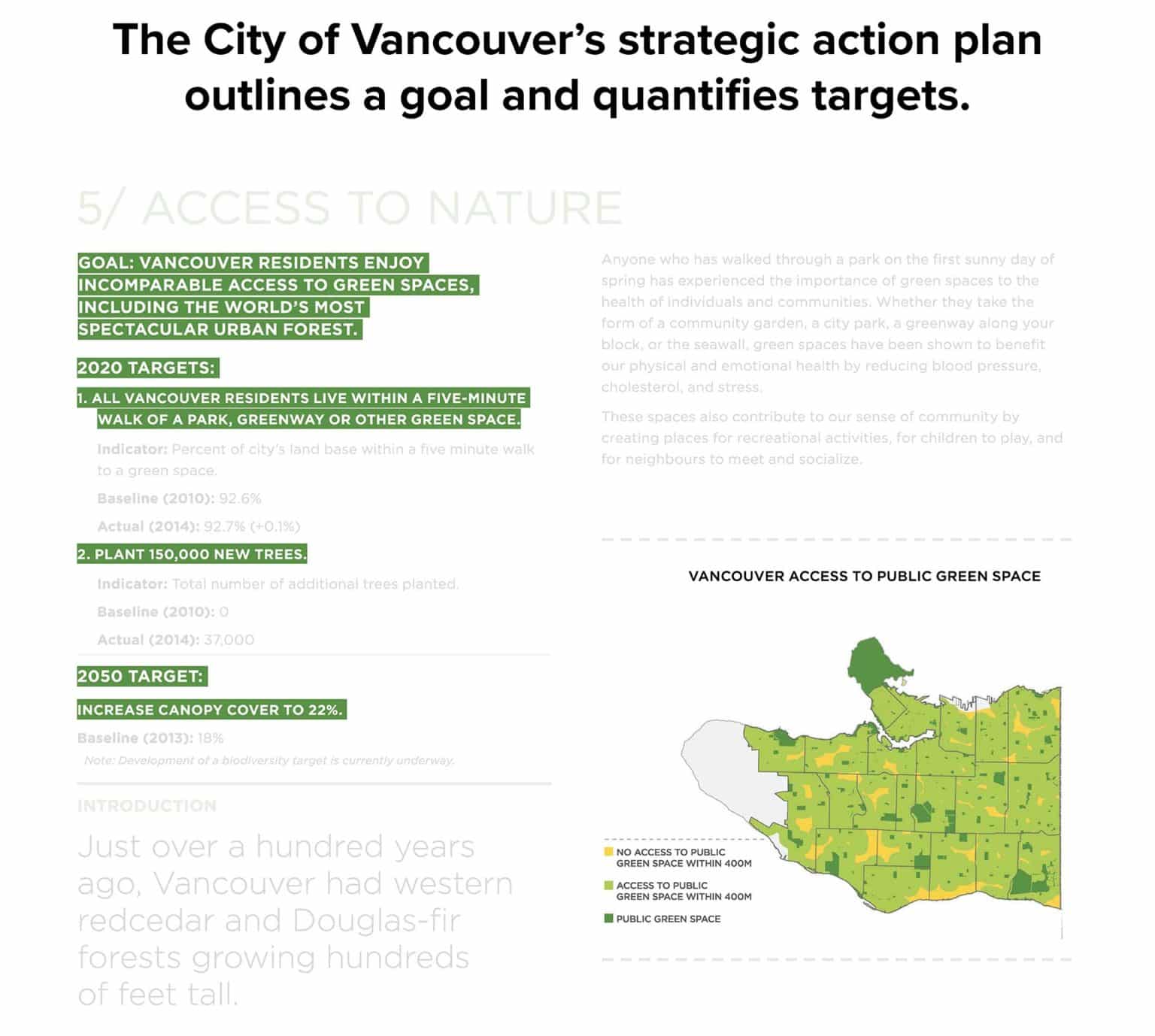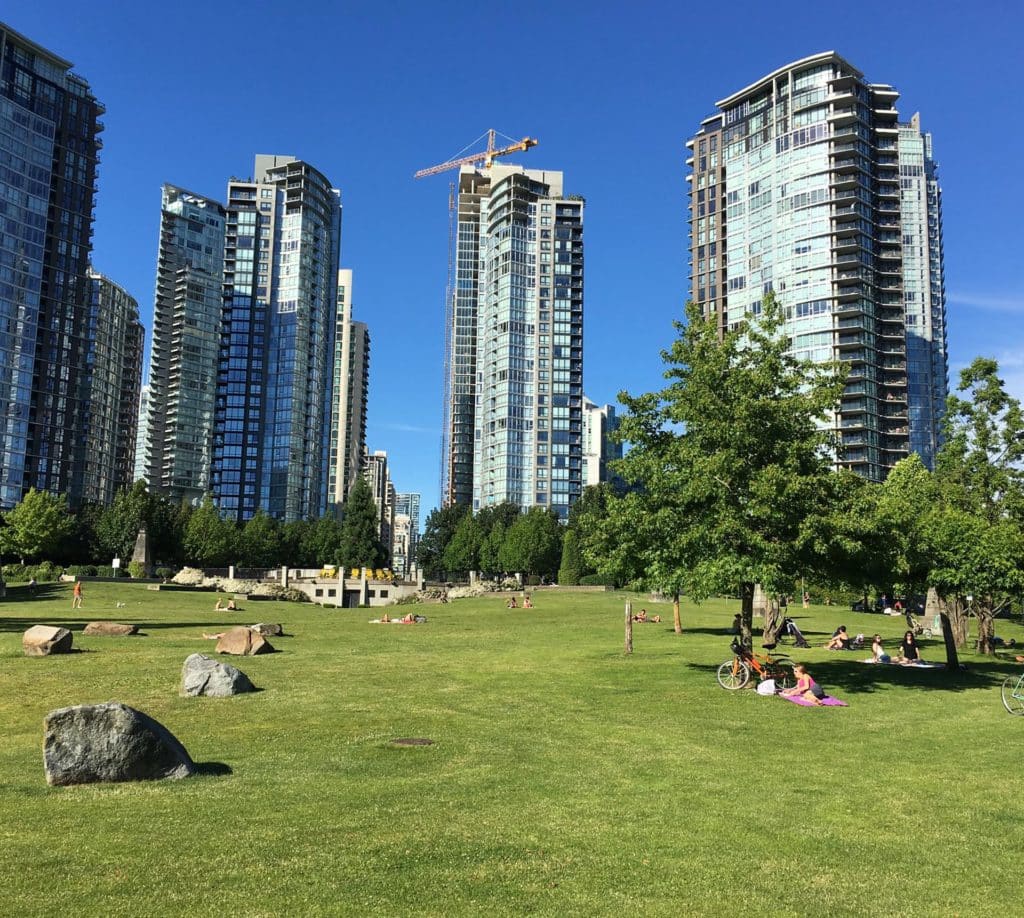Many cities incorporate urban forests into broader, community-wide plans such as comprehensive and strategic plans. Using these general urban plans, city governments can require or incentivize the expansion and protection of urban forests or other green infrastructure on public and private lands alike.
Comprehensive plans, or master plans, are urban growth management plans that use community input and historical context to shape goals for development, transportation, land use, and parks and recreation, often extending decades into the future.
Trees may be incorporated into comprehensive plans when cities:
- Identify zones of protection (such as riparian buffers)
- Establish “green corridors” that connect parks
- Embed goals that recognize the contribution of trees to social equity, transportation, and more.
Strategic plans serve a similar function to comprehensive plans but operate over shorter time spans. For example, the City of Vancouver, Canada has adopted a strategic action plan called “Greenest City” to address the threats posed by climate change. The plan outlines the policies, actions, and partnerships needed to achieve this ambitious goal. (City of Vancouver, 2015)

